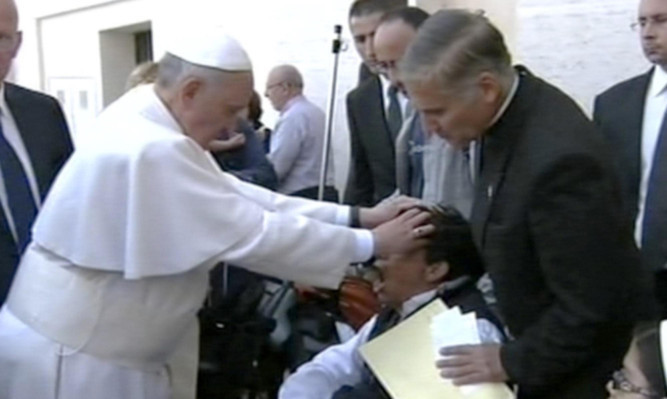Religious observers are asking: “Is Pope Francis an exorcist?” after an incident in St Peter’s Square.
The Pope laid his hands on the head of a young man after celebrating Mass. The man heaved deeply a half-dozen times, convulsed and shook, then slumped in his wheelchair as Francis prayed over him.
The television station of the Italian bishops’ conference said it had surveyed exorcists, who agreed Francis either performed an exorcism or a prayer to free the man from the devil.
The Vatican was more cautious, saying Francis “didn’t intend to perform any exorcism but as he often does for the sick or suffering, he simply intended to pray for someone”.
Fuelling the speculation is Francis’ obsession with the devil, a frequent subject of his homilies.
There has been an apparent surge in demand for exorcisms among the faithful, despite the irreverent treatment the rite often receives from Hollywood, such as the green vomit and the spinning head of the possessed girl in the 1973 cult classic the Exorcist.
In his very first homily as pope on March 14, Francis warned cardinals gathered in the Sistine Chapel the day after he was elected that “he who doesn’t pray to the Lord prays to the devil.”
He has since mentioned the devil on a handful of occasions, including on May 4.
Experts said Francis’ frequent invocation of the devil is a reflection both of his Jesuit spirituality, his Latin American roots and a reflection of a Catholic Church weakened by secularisation.
Only a priest authorised by a bishop can perform an exorcism and canon law specifies the exorcist must be “endowed with piety, knowledge, prudence and integrity.”
The Rev Giulio Maspero, a theologian from Rome who has witnessed or participated in more than a dozen exorcisms, says he is certain Francis’ prayer on Sunday was either a full-fledged exorcism or a prayer to “liberate” the young man from a demonic possession.
